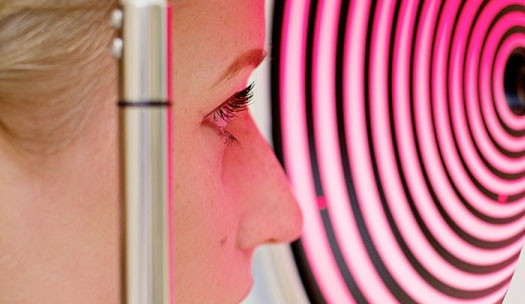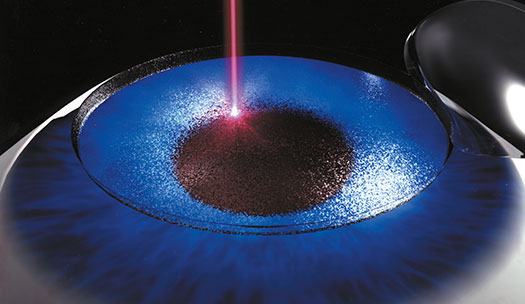module_content_multicolumnLaser eye surgery
Correct visual impairment thanks to LASIK surgery
Life without glasses and contact lens is possible, thanks to a LASIK operation. LASIK surgery is a proven laser eye procedure which is conducted in lasik germany® centres nationwide by high-volume surgeons. Under the direction of Dr. Jörg Fischer, proven LASIK experts perform over 1000 eye operations independently every year.In addition to experience and competence, our work is distinguished by our use of the most modern laser technology in a LASIK operation.

module_contentA LASIK operation to improve vision is the most frequently applied eye operation in the world, and has been offered in lasik germany® centres in Hamburg, Berlin, Hanover, Munich, Frankfurt, Stuttgart and Oberhausen for many years with great success.
module_icon_list- Faster
healing process - Over 30 years
Experience - Uncomplicated
Intervention - Diopters (max.)
nearsightedness - Diopters (max.)
Long-sightedness - Dioptrin (max.)
corneacurvature
module_contentLasik-OP
Preparation for LASIK surgery
Once you have decided on LASIK surgery, you are first examined in detail. For the preliminary investigation, please plan on an hour to measure your exact vision strength, pupil size as well as the corneal thickness with the most modern computer technology. Based on the results, your eye surgeon will specify an individual treatment and laser procedure. At the same time, the recorded data serve as basic information for the surgeon who will perform the LASIK surgery on your eye. Eye laser surgery is done on an outpatient basis. It is quite sufficient if you arrive at your lasik germany® centre 1 hour before your appointment.
module_content_multicolumnStep 1. Initial consultation
We will first provide you with comprehensive information directly, over the phone. At your first appointment we take a first medical history to assess your suitability for the procedure. At your non-obligatory consultation, a laser trained optometrist will spend some time testing your eyes to make a diagnosis and determine your suitability for LASIK surgery. Your first consultation provides a good opportunity to answer any questions you may have

module_content_multicolumnStep 2: Initial pre-op examination
The purpose of this examination is to determine your suitability for LASIK treatment and to recommend the best technique for you. Initial pre-op examination – Your first step to clear vision. A number of tests and examinations are carried out prior to the LASIK eye surgery, which last about an hour at lasik germany®.
The initial pre-op examination – step by step.

module_accordionThe micro-exact measurement of the cornea provides information about height and curvature values. The cornea topography also determines possibly existing cornea damage.
Tonometry serves above all the early detection of glaucoma (green star). If there is increased internal pressure of the eye, i.e. over 10 and 21 mm mercury column (mmHg), the eye is at risk for glaucoma.
The length of the eyeball and its sections are measured by laser. This method provides an accurate calculation of the post-operative refractivity of the eye.
The objective (visual acuity) and subjective (refraction) refractive power of your eyes are determined with most modern wavefront aberrometer.
The determination of the corneal thickness of your eye is done using ultrasound.
In order to establish the sensitivity of your eyes, the width of the pupil and its change are measured under different light effects (day/night) with a special measuring instrument called a pupillometer.
Optical coherence tomography is one of the most accurate ways to determine degenerations, retinal detachments and other types of damage to the retina. Before the OCT the patient’s pupils are dilated with eye drops.
module_content_multicolumnStep 3: Eye laser treatment
The LASIK operation is a minor intervention which only takes a few minutes. The eye is anaesthetised with drops so that the patient barely feels anything during the procedure. Then the doctor performing the procedure fixes the eye. While the mechanical microkeratome (microblade) prepares the corneal flap with the LASIK keratome, a laser is used for the femto LASIK procedures. The femtosecond laser creates very thin corneal flaps of precise dimensions, The corneal flap is then opened up and, using a laser, the doctor models the deeper layers of the cornea, accessing them through the created opening, to compensate for the previously individually assessed visual impairment. The surgical microscope directly transfers the corneal images to the monitor.

module_accordionThe surgeon renders the eye to be treated with LASIK insensitive to pain, using drops. He then fixes it carefully with a small ring, which lightly adheres to the eyeball.A slight pressure on the eye is noticeable.
While the mechanical microkeratome (microblade) prepares the corneal flap with the standard LASIK keratome, a laser is used for the comfort and premium femto LASIK procedures. The femtosecond laser creates very thin corneal flaps of precise dimensions, You will feel a slight pressure and your field of vision will go dark for approx. one minute. This is completely normal. Opening: The corneal covering is unfolded. You won’t feel this. Now your eye surgeon can reach the layers of the internal cornea with the laser light.
In standard LASIK, the corneal flap is cut with a mechanical microkeratome. The microkeratome is a micro knife, also known as a small cutting plane. This special plane now cuts a thin cap from the cornea.
In these two LASIK procedures, the cornea is cut with a femtosecond laser. The special laser makes it possible to prepare very thin and highly precise corneal flaps. You will feel a slight feeling of pressure and the field of vision will darken for about one minute. This need not worry you, because the short-term darkening is quite normal.
Uniform, thin, smooth corneal flap Exclusion of irregular flaps More precision in treatment.
The corneal covering is unfolded. You won’t feel this. Now your eye surgeon can reach the layers of the internal cornea with the laser light.
Guided by the computer, the cool laser light of the laser now gently models the treatment zone. A narrow, 1-2 mm wide ray strikes the eye with the speed of light, which allows the eye to recover between pulses. Even minimal eye movements are therefore immediately recognised and accounted for. An extremely smooth corneal surface is produced, which compensates for your defective vision precisely according to your individual measurements. The LASIK laser eye treatment takes only a few minutes.
module_content_multicolumnStep 4: Follow-up treatment
Directly after the eye lasers the corneal cover is closed over again. It clings to the eyeball. It covers the treated surface like the body’s own plaster. The surgeon does not need to suture the incision, as the eye heals itself. Right after the surgery, the vision in this eye is somewhat blurry and the patient first has the feeling of having a small foreign body in their eye. This irritation subsides after approximately three hours. The eye feels natural.

module_accordionImmediately after the LASIK operation we check your eye again. You can then go home without any annoying bandage! On the day after LASIK surgery, you can already see almost normally again without eyeglasses. In the first weeks, vision can still adjust slightly; permanent stability is usually reached after four to six weeks.
Im Nachsorgeset, das Sie in der Apotheke erhalten, finden Sie Augentropfen, die Sie bitte während der ersten Woche nach der LASIK-Operation regelmäßig anwenden, und einen durchsichtigen Verband. Er schützt das mit LASIK behandelte Auge während der Nacht, damit Sie es nicht versehentlich reiben. Tagsüber brauchen Sie ihn nicht. Wir bitten Sie darauf zu achten, dass kein Wasser in das operierte Auge gerät. Und bitte daran denken: Gönnen Sie Ihrem Auge eine „reibungslose“ Phase nach einer LASIK-Operation.
module_content_multicolumnFor whom is it suitable
Prerequisites:
A LASIK operation compensates for visual impairments based on certain root causes such that the patient is then able to see without any glasses or contact lenses. It is the first choice for many people, but those interested must meet certain prerequisites: The minimum age for the intervention is 18 years, since before this age, full growth has not yet been reached. The sight prescription must have remained stable for at least 12 months. Otherwise, it may be the case that, after the intervention, the prescription may change such that glasses or contact lenses will be required.
The visual impairment must be caused either by short-sightedness (up to -10 dioptres), long-sightedness (up to +4 dioptres) or astigmatism. There must be no eye disease such as conjunctivitis or glaucoma/cataract. Furthermore, the person undergoing the procedure must not be pregnant or breastfeeding. The patient should also be in good physical health and not have any known intolerances towards the anaesthetic agents used during the operation.
module_contentComparison Eye Laser
LASIK methods & costs
module_contentThanks to our many years of experience in refractive surgery, you are in safe hands with Dr. Jörg Fischer’s team. If you would like to receive comprehensive advice on laser treatment from qualified eye surgeons, we are available to you on the free telephone hotline 0800 / 599 599 9 and in the practical online video consultation hour. If you would like to obtain professional advice personally from proven experts, we would be pleased to welcome you at our locations in Hamburg, Berlin, Hanover, Munich, Frankfurt, Stuttgart and Oberhausen.











